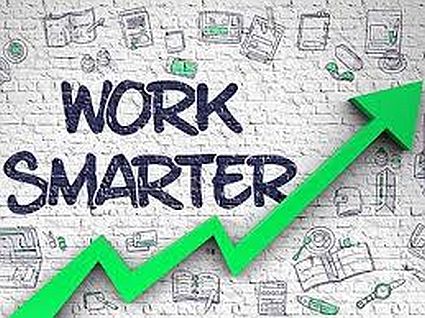The brilliant Matt Heinz provoked me with his post about productivity. As I often do, I went to the dictionary. Some of what I found:
When we talk about workplace productivity, we are referring largely to how much work is accomplished in a particular work environment, over a particular period of time. When a business is fully operational and functioning at capacity, productivity should, in theory, be maximized.
Productivity is defined as the ratio of output to input. For example, productivity can be measured as the ratio of total output to hours worked. Yield is a measure of land productivity.
One standard measure of productivity is output per worker-hour, or the ratio between the number of hours worked to total output. You can also measure your productivity per week or month if each unit of production takes more than an hour to create.
These, and other versions of these definitions, have existed for decades, perhaps centuries. But there’s a fundamental error in the these definitions.
If we accepted these definitions, a seller sending 2000 emails a day would be twice as productive as one that sends 1000. Or one making 100 calls a day is twice as productive as the seller making a measly 50. Or one chasing 20 opportunities versus the person chasing 10.
Productivity (and when you look at some of the economic definitions of productivity, you see this) is really not about output, it’s about outcomes. The volume of work we do is meaningless, unless it produces the outcomes or results we need.
The person that sends 2000 emails, but gets 100 responses is not as “productive” as the person sending 1000 emails and getting 250 responses. Or the person with a 20% win rate compared to the person with the 50% win rate–and a smaller, higher quality pipeline.
Productivity should not be about the volume of work we do, rather it should be about what results from the work done. The result is not the 2000 emails, but what those 2000 emails produced.
Productivity is not about activity or busyness, but it’s about the outcomes of generated by those activities.
Somehow, we seem to have lost sight that productivity is less about our volumes of activities, how many hours we work, how hard we work. What counts is the outcomes for whatever work required to create those outcomes.
Sometimes, we incorrectly focus on activities or outputs because those are the obvious/easy things for us to track and measure. It doesn’t require deep understanding of why we do these things and what they mean to our ability to achieve our goals. We focus on emails, phone calls, cadences, and other prospecting activity metrics, because we know we have to prospect. But we forget, that prospecting is meaningless unless we engage customers that have a real interest in learning about the problems and issues we address. Stated differently, volumes of emails are meaningless unless they produce people interested in talking about a specific issue we can address. The number of opens are meaningless, if they are from people who have no interest/concern about the issues.
Shifting to a productivity mindset means we have to understand the customer buying process and our complementary selling process deeply. We have to understand how customers progress through the process, critical outcomes/milestones they seek to achieve in the process. We have to connect the dots for each of those outcomes or milestones, how they relate to or are influenced by each other, how they have to be sequenced to produce the end outcome–a customer successfully implementing a change process.
Too often, when I speak to people about some of the activity metrics they put in place I might ask, “Why are you insisting that people make 1000 emails and 100 phone calls a day?” Too often, the answer comes back, “Well, last month it was 500 emails and 50 calls. We missed our goals, so they have to do more!”
Too often, we fail to analyze the outcomes created, trying to understand what caused them. We accept win rates of 15-20%, without understanding what caused them and what we might do differently to improve them.
We need to go back to basics–What are the critical outcomes we and our customers must achieve through their change/buying process? How do they relate to each other and the ultimate outcomes/results we expect? How do we accomplish enough of them to achieve our goals? How do we achieve more of them in the same amount of time, or for the same $’s? (improving our productivity).
Productivity is what we accomplish, not the activities we execute.

Leave a Reply